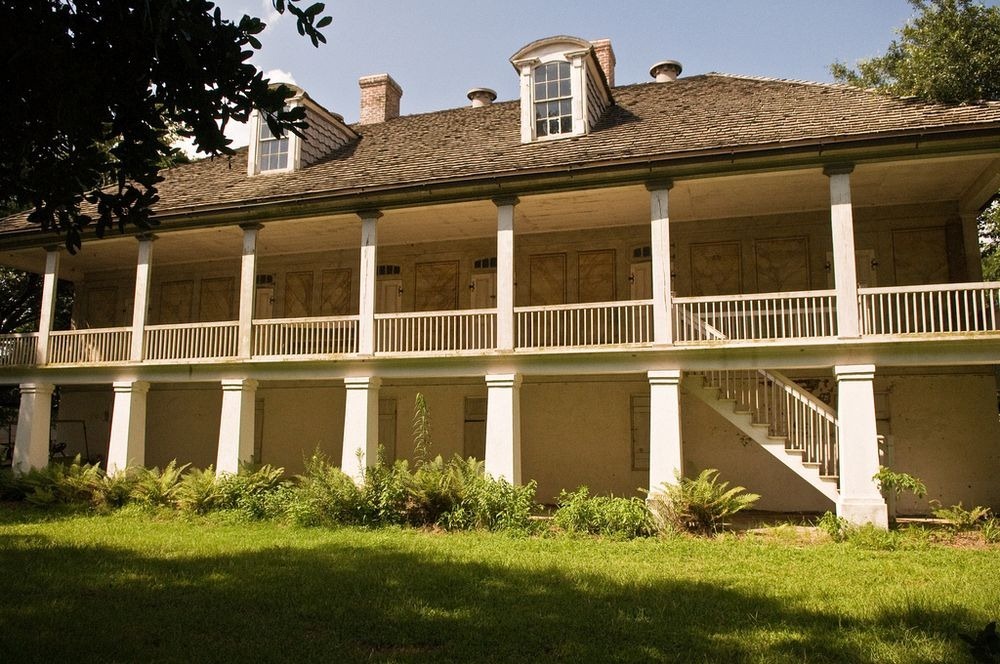Whitney Plantation is located near Wallace, in Louisiana, on the historic River Road in St. John the Baptist Parish, less than an hour from New Orleans. Founded in the days before the Civil War, this former sugar cane plantation is today America’s only museum dedicated entirely to slavery.
The property was originally known as Habitation Haydel, after its owner Ambroise Heidel, a German immigrant, who came to Louisiana and bought this tract of land in the 1750s. Heidel originally grew indigo before his son Jean Jacques converted the plantation to sugar in the early 1800's. It was Jean Jacques who built the historic French Creole raised-style main house. Back in those days, sugar plantations, just like any other plantation in the country, employed mostly African slaves as labor. Some 350 slaves are recorded to have lived, sweated, toiled and beaten here.

Photo credit: Corey Balazowich/Flickr
It wasn’t until after the property was sold to a Northerner, Bradish Johnson, after the Civil War, that the property was named Whitney by the new owner in honor of his grandson.
In 1999, the plantation was bought by New Orleans lawyer named John Cummings. For the next 15 years Cummings invested $8 million of his personal money and time to develop the property into America’s first museum of slavery, in an effort to unlock the grim story of America’s greatest shame.
There are a number of memorials and exhibits on the grounds of the museum, as well as art works and sculptures. There is one "Wall of Honor" engraved with the names of the 350 slaves who spent their lives in the plantation. There is another memorial dedicated to 107,000 people enslaved in Louisiana. In the middle of a field in another corner of the property is a bronze sculpture of a black angel carrying a baby to Heaven. Surrounding the sculpture are granite slabs with the names of 2,200 Louisiana slave children who died before their third birth date. While no records of death rates were kept in the plantation, historical documents reveal that 39 children died on this plantation from 1823 to 1863, only six reaching the age of five.
It was at Whitney Plantation where the 2012 Quentin Tarantino movie Django Unchained and the 2013 movie 12 Years a Slave were filmed. The historic property now contains an overseer's house, the rare French Creole main house, a plantation store, a two story tall pigeon-house, slave quarters, and other structures. Parts of the land are still used to grow sugarcane.

Photo credit: Corey Balazowich/Flickr

Photo credit: Corey Balazowich/Flickr

Photo credit: Corey Balazowich/Flickr

Photo credit: Mississippi Snopes/Flickr

Photo credit: SC Cunningham/Flickr

Photo credit: Michael McCarthy/Flickr
Subscribe to our Newsletter and get articles like this delieverd straight to your inbox
The property was originally known as Habitation Haydel, after its owner Ambroise Heidel, a German immigrant, who came to Louisiana and bought this tract of land in the 1750s. Heidel originally grew indigo before his son Jean Jacques converted the plantation to sugar in the early 1800's. It was Jean Jacques who built the historic French Creole raised-style main house. Back in those days, sugar plantations, just like any other plantation in the country, employed mostly African slaves as labor. Some 350 slaves are recorded to have lived, sweated, toiled and beaten here.

Photo credit: Corey Balazowich/Flickr
It wasn’t until after the property was sold to a Northerner, Bradish Johnson, after the Civil War, that the property was named Whitney by the new owner in honor of his grandson.
In 1999, the plantation was bought by New Orleans lawyer named John Cummings. For the next 15 years Cummings invested $8 million of his personal money and time to develop the property into America’s first museum of slavery, in an effort to unlock the grim story of America’s greatest shame.
There are a number of memorials and exhibits on the grounds of the museum, as well as art works and sculptures. There is one "Wall of Honor" engraved with the names of the 350 slaves who spent their lives in the plantation. There is another memorial dedicated to 107,000 people enslaved in Louisiana. In the middle of a field in another corner of the property is a bronze sculpture of a black angel carrying a baby to Heaven. Surrounding the sculpture are granite slabs with the names of 2,200 Louisiana slave children who died before their third birth date. While no records of death rates were kept in the plantation, historical documents reveal that 39 children died on this plantation from 1823 to 1863, only six reaching the age of five.
It was at Whitney Plantation where the 2012 Quentin Tarantino movie Django Unchained and the 2013 movie 12 Years a Slave were filmed. The historic property now contains an overseer's house, the rare French Creole main house, a plantation store, a two story tall pigeon-house, slave quarters, and other structures. Parts of the land are still used to grow sugarcane.

Photo credit: Corey Balazowich/Flickr

Photo credit: Corey Balazowich/Flickr

Photo credit: Corey Balazowich/Flickr

Photo credit: Mississippi Snopes/Flickr

Photo credit: SC Cunningham/Flickr

Photo credit: Michael McCarthy/Flickr
Subscribe to our Newsletter and get articles like this delieverd straight to your inbox
Whitney Plantation: America’s First And Only Slavery Museum
4/
5
Oleh
Chandu Numerology






